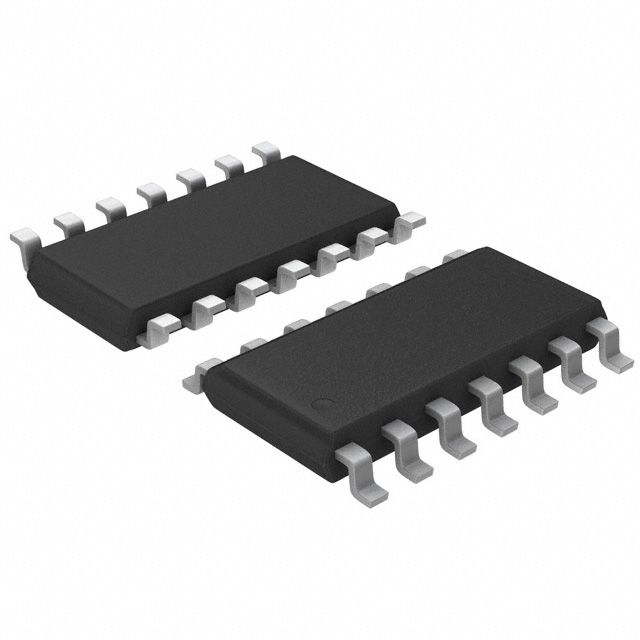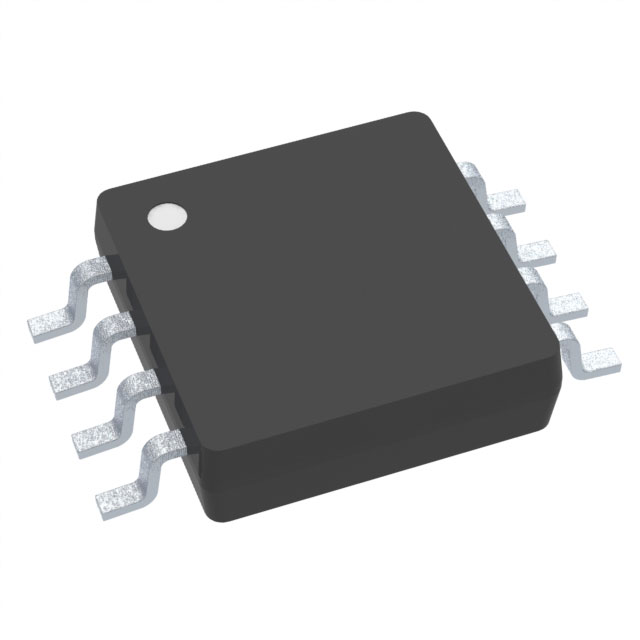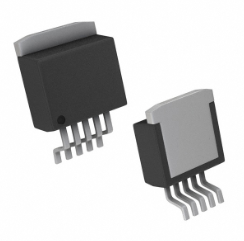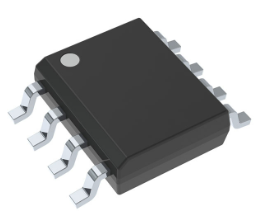- Online chat

LM2901PWR
1. Overview
The LM2901PWR is a quad differential comparator integrated circuit (IC) developed by Texas Instruments. Comparators are fundamental analog components used to compare two input voltages and produce a digital - level output indicating which input is larger.
2. Key Features
2.1 Quad Comparator Design
The LM2901PWR contains four independent comparators within a single package. This multi - comparator configuration allows for multiple voltage comparison tasks to be carried out simultaneously in a compact form. It reduces the need for multiple single - comparator chips, saving board space and cost in applications that require several comparison operations, such as in multi - channel sensor interfaces or complex control systems.
2.2 Wide Supply Voltage Range
It can operate over a broad supply voltage range. Typically, it can function with a single - supply voltage from 2 V to 36 V or with dual - supply voltages from ±1 V to ±18 V. This wide supply voltage flexibility makes it adaptable to various power - supply scenarios, whether powered by batteries, regulated power supplies, or other sources, and enables its use in a diverse set of applications.
2.3 Low Input Bias Current
The comparator has a low input bias current. Low input bias current is crucial as it minimizes the loading effect on the input signal sources. When used with high - impedance sources like sensors or voltage dividers, the LM2901PWR ensures that the input signals are accurately compared without significant signal degradation, thus maintaining the integrity of the comparison process.
2.4 Open - Collector Outputs
The outputs of the LM2901PWR are open - collector types. Open - collector outputs offer flexibility in terms of interfacing with other components. They can be easily connected to pull - up resistors to set the desired output voltage levels. Additionally, multiple open - collector outputs can be wired - ANDed together, which is useful in logic - level applications for combining multiple comparison results.
2.5 Low Power Consumption
The device is designed with relatively low power consumption. This is beneficial for battery - powered devices or applications where power efficiency is a priority. Reduced power consumption helps to extend the battery life and also minimizes heat generation, enhancing the overall reliability of the system.
3. Applications
3.1 Voltage Monitoring and Level Detection
In power - supply circuits, the LM2901PWR can be employed to monitor voltage levels. For example, it can detect if the battery voltage in a portable device has dropped below a certain threshold. When the voltage falls below the set level, the comparator can trigger an appropriate action, such as activating a low - battery warning or shutting down non - essential functions. It is also used in over - voltage and under - voltage protection circuits in industrial power systems.
3.2 Signal Conditioning and Pulse Generation
The comparator can convert analog signals into digital pulses. In sensor applications, it can compare the sensor output voltage with a reference voltage. When the sensor reading crosses a specific level, the LM2901PWR generates a digital signal. This is useful in light - sensing circuits, where it can detect changes in light intensity and produce corresponding digital pulses for further processing.
3.3 Motor Control
In motor - control circuits, the LM2901PWR can be used for speed control and direction control. It can compare the feedback voltage from a motor speed sensor with a reference voltage to adjust the motor's speed. Additionally, it can determine the direction of the motor based on the comparison of different input voltages, providing essential control signals for motor operation.
3.4 Logic and Timing Circuits
It is often utilized in logic and timing circuits. By comparing input signals, it can generate appropriate logic outputs. For example, in a clock - generation circuit, it can compare the phase or amplitude of different clock signals to ensure proper synchronization and generate accurate timing pulses.
4. Electrical Specifications
4.1 Input Offset Voltage
The input offset voltage is the voltage difference that must be applied between the two inputs to make the output switch states. The LM2901PWR has a specified input offset voltage, which affects the accuracy of the comparison. A lower input offset voltage generally leads to more precise voltage comparisons.
4.2 Propagation Delay
Propagation delay is the time it takes for the output to change state after a change in the input voltage. The LM2901PWR has a defined propagation delay, which is an important parameter in high - speed applications. A shorter propagation delay allows for faster response times in the circuit, enabling quicker decision - making based on the input voltage comparisons.
4.3 Supply Current
The supply current indicates the amount of current the IC draws from the power supply. The relatively low supply current of the LM2901PWR contributes to its low - power operation, making it suitable for power - sensitive applications.
In summary, the LM2901PWR is a versatile quad differential comparator that offers a wide range of features suitable for various analog and digital - mixed applications, providing flexibility and performance in different electronic systems.








